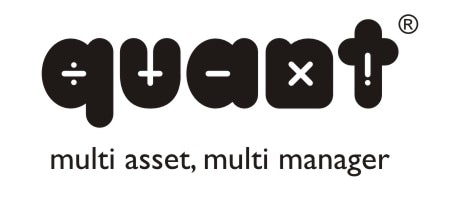Scheme type
AMC
Risk appetite
Rating
Returns

"Quant Small Cap Fund - Growth - Regular Plan"
Min. investment
Rs. 1000.0
5 Year Returns
47.06%

"Quant Infrastructure Fund - Growth Option"
Min. investment
Rs. 1000.0
5 Year Returns
40.35%

"ICICI Prudential Infrastructure Fund - Growth"
Min. investment
Rs. 100.0
5 Year Returns
38.67%

"Nippon India Small Cap Fund - Growth Plan - Growth Option"
Min. investment
Rs. 100.0
5 Year Returns
38.16%

"ICICI Prudential Commodities Fund - Growth Option"
Min. investment
Rs. 100.0
5 Year Returns
37.87%

"Motilal Oswal Midcap Fund-Regular Plan-Growth Option"
Min. investment
Rs. 500.0
5 Year Returns
37.32%

"Bandhan Infrastructure Fund - Regular Plan - Growth"
Min. investment
Rs. 100.0
5 Year Returns
35.84%

"HDFC Infrastructure Fund - Growth Plan"
Min. investment
Rs. 100.0
5 Year Returns
35.78%

"Bandhan Small Cap Fund - Regular Plan Growth"
Min. investment
Rs. 100.0
5 Year Returns
35.25%

"Nippon India Power & Infra Fund-Growth Plan -Growth Option"
Min. investment
Rs. 100.0
5 Year Returns
35.10%

"Franklin Build India Fund Growth Plan"
Min. investment
Rs. 500.0
5 Year Returns
34.97%

"ICICI Prudential Bharat 22 Fof - Cumulative Option"
Min. investment
Rs. 1000.0
5 Year Returns
34.86%








































Frequently asked questions
How many mutual funds are listed?
1000+ mutual funds schemes are listed on the Bajaj Finserv platform.
How do I find all my mutual fund details?
To access all your mutual fund details, you can check your account statements, visit the fund's official website, or use the Bajaj Finserv platform to check the information about all the mutual fund schemes you have invested in, through the Bajaj Finserv platform.
Can I invest Rs. 500 per month in mutual funds?
Yes, many mutual fund schemes allow SIP investments starting from as low as Rs. 500 per month, making it accessible to a wide range of investors.
Can we get 15% return on mutual fund?
While mutual funds can offer varying returns, aiming for a consistent 15% return may not always be feasible or guaranteed due to market fluctuations and other factors.
Can I invest in 2 mutual funds?
Absolutely, investors can diversify their investment portfolio by investing in multiple mutual funds to spread risk and potentially enhance returns.
What are the mutual fund recategorisation norms?
Mutual fund recategorisation norms involve SEBI's guidelines for classifying and categorising mutual fund schemes based on their investment objectives, asset allocation, and risk profile.
What are Equity Schemes?
Equity schemes are mutual fund schemes primarily investing in stocks or equities, aiming for long-term capital appreciation by participating in the growth of companies.
What Are Debt Schemes?
Debt schemes are mutual fund schemes primarily investing in fixed-income securities like bonds, aiming for regular income generation and capital preservation with lower volatility.
What Are Hybrid Schemes?
Hybrid schemes, also known as balanced funds, invest in a mix of equities and debt instruments to provide both capital appreciation and income generation with a balanced risk-return profile.
What is Solution-oriented Schemes?
Solution-oriented schemes are mutual fund schemes with a specific investment goal or solution, such as retirement planning or children's education, typically with a lock-in period and strategic asset allocation.
How are returns earned in Mutual Funds?
Returns in mutual funds are earned through dividends, interest, and capital gains. Dividends and interest are distributed from the fund's holdings, while capital gains arise from the sale of securities at a profit. These returns can be reinvested in the fund or paid out to investors. The overall performance depends on the fund's investment strategy and market conditions.
Is mutual fund investment profitable?
Mutual fund investments can be profitable, offering potential for higher returns compared to traditional savings methods. They provide diversification, professional management, and access to a wide range of asset classes. However, profitability is subject to market risks and the specific fund's performance. Investors should assess their risk tolerance, investment horizon, and financial goals before investing.
How is mutual fund set up?
A mutual fund is set up by an Asset Management Company (AMC), which creates a trust with a sponsor, trustees, and a custodian. The AMC manages the fund's investments, while the trustees ensure regulatory compliance. The custodian holds the fund's securities. SEBI, India's market regulator, must approve the mutual fund scheme before it can be offered to investors.
What are the factors to consider while selecting a mutual fund scheme?
When selecting a mutual fund scheme, consider factors such as investment objective, risk tolerance, fund performance, expense ratio, fund manager’s track record, and the fund house's reputation. Additionally, review the fund's portfolio composition, investment strategy, and past returns relative to benchmarks. Assessing these factors helps in aligning the mutual fund selection with your financial goals.
How many Indians have SIP?
As of the latest data, over 5.6 crore (56 million) Indians have Systematic Investment Plans (SIPs) in mutual funds. SIPs allow investors to invest a fixed amount regularly, promoting disciplined savings and investment habits. The popularity of SIPs has been growing, contributing significantly to the mutual fund industry's assets under management.
What are the rules for mutual fund recategorisation?
Mutual fund recategorisation rules were introduced by SEBI in 2017 to bring uniformity and clarity in mutual fund schemes. Under these guidelines, fund houses can offer only one scheme per category in each type of mutual fund. The categories include equity, debt, hybrid, solution-oriented, and others. Funds are classified based on asset allocation, investment objectives, and risk profiles. Recategorisation ensures that schemes are distinct, preventing overlap and helping investors make informed choices. It also mandates fund houses to adhere to the defined investment limits and themes for each category, ensuring transparency and consistency across the industry.
How many mutual funds are listed?
As of 2024, there are over 2,500 mutual fund schemes listed in India, across various categories such as equity, debt, hybrid, and others. These funds are offered by multiple Asset Management Companies (AMCs), providing investors with diverse options based on their financial goals and risk tolerance.





